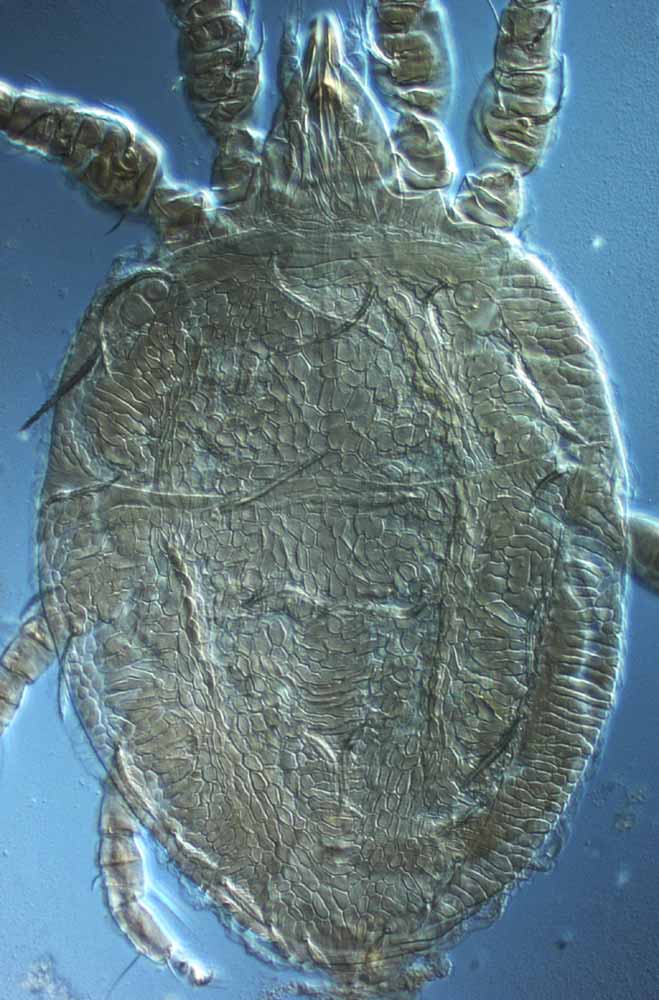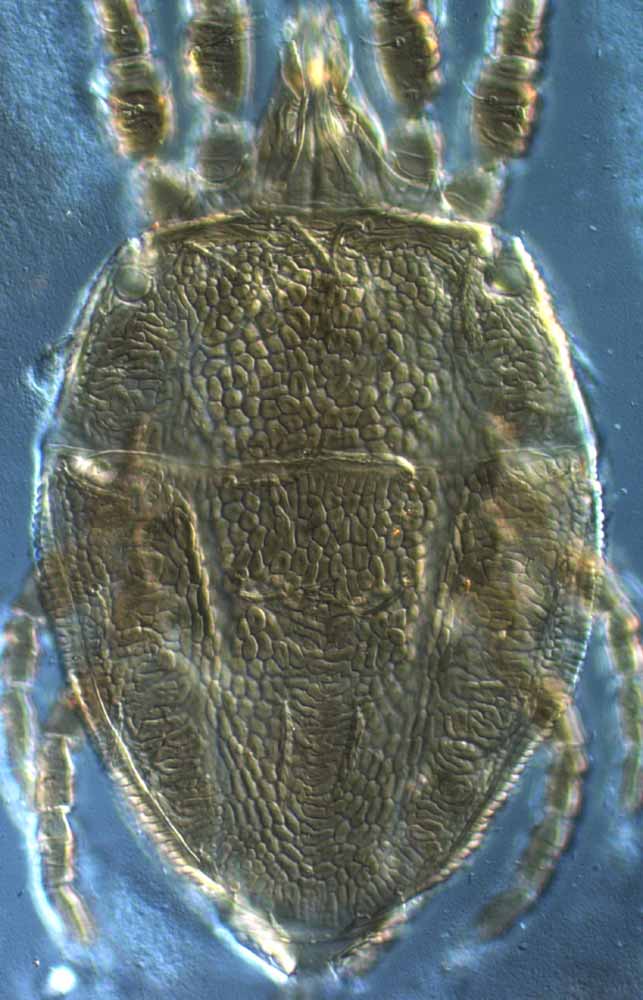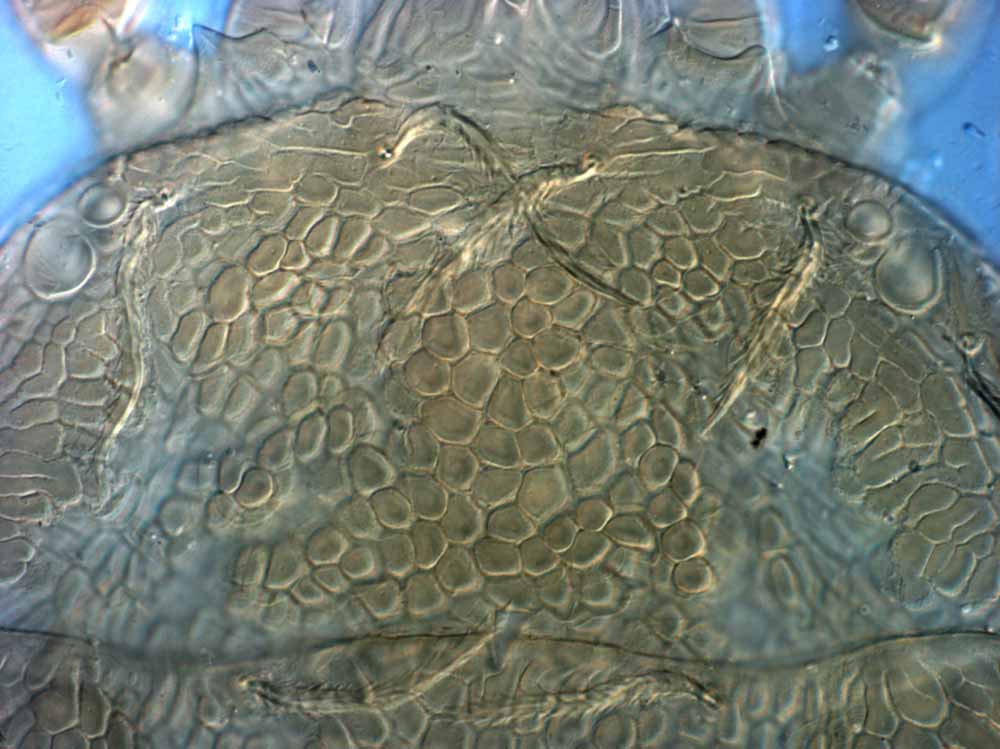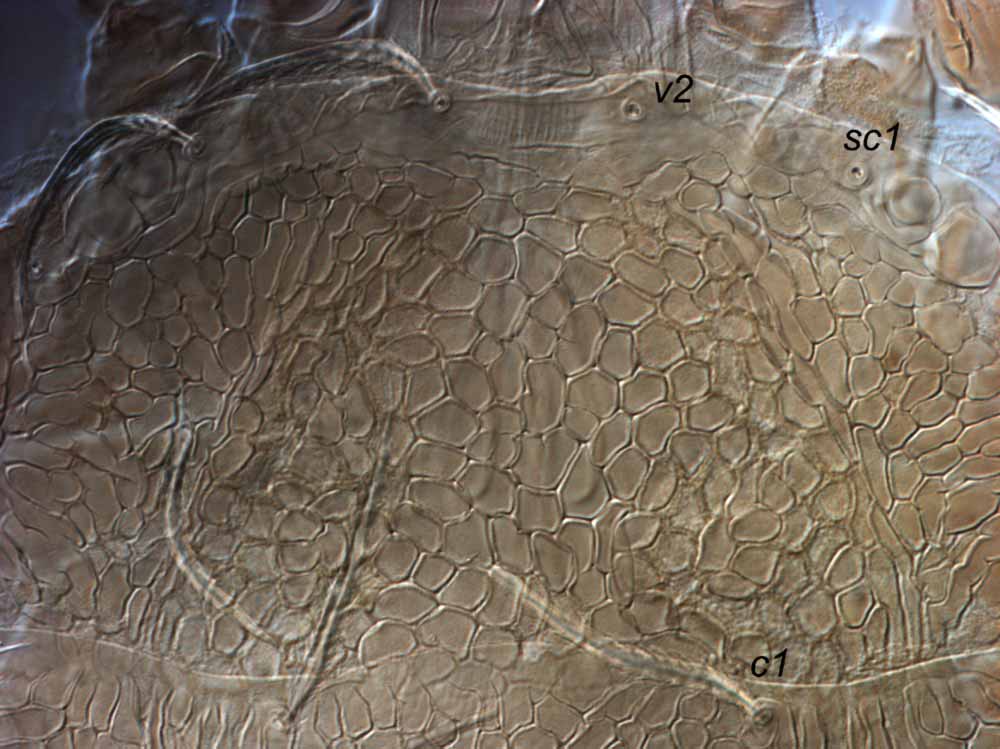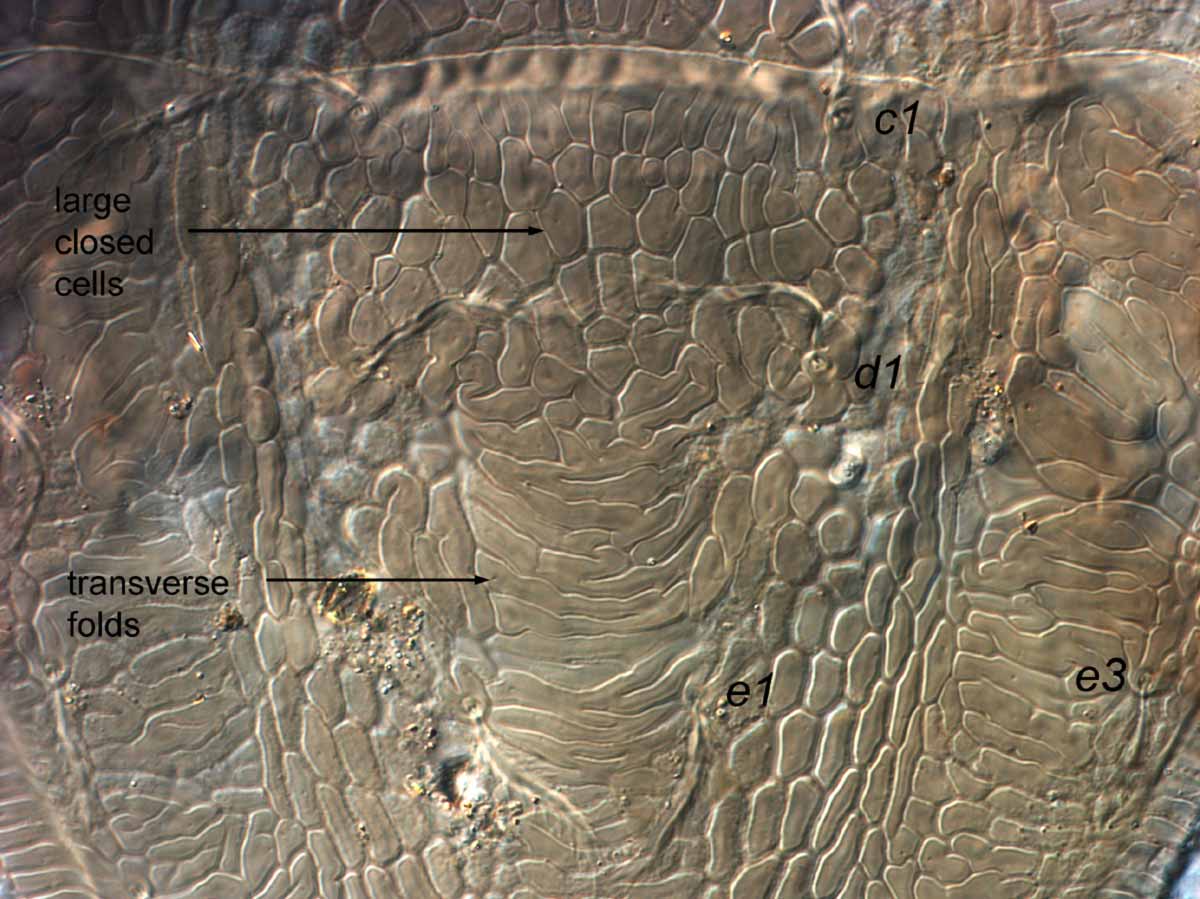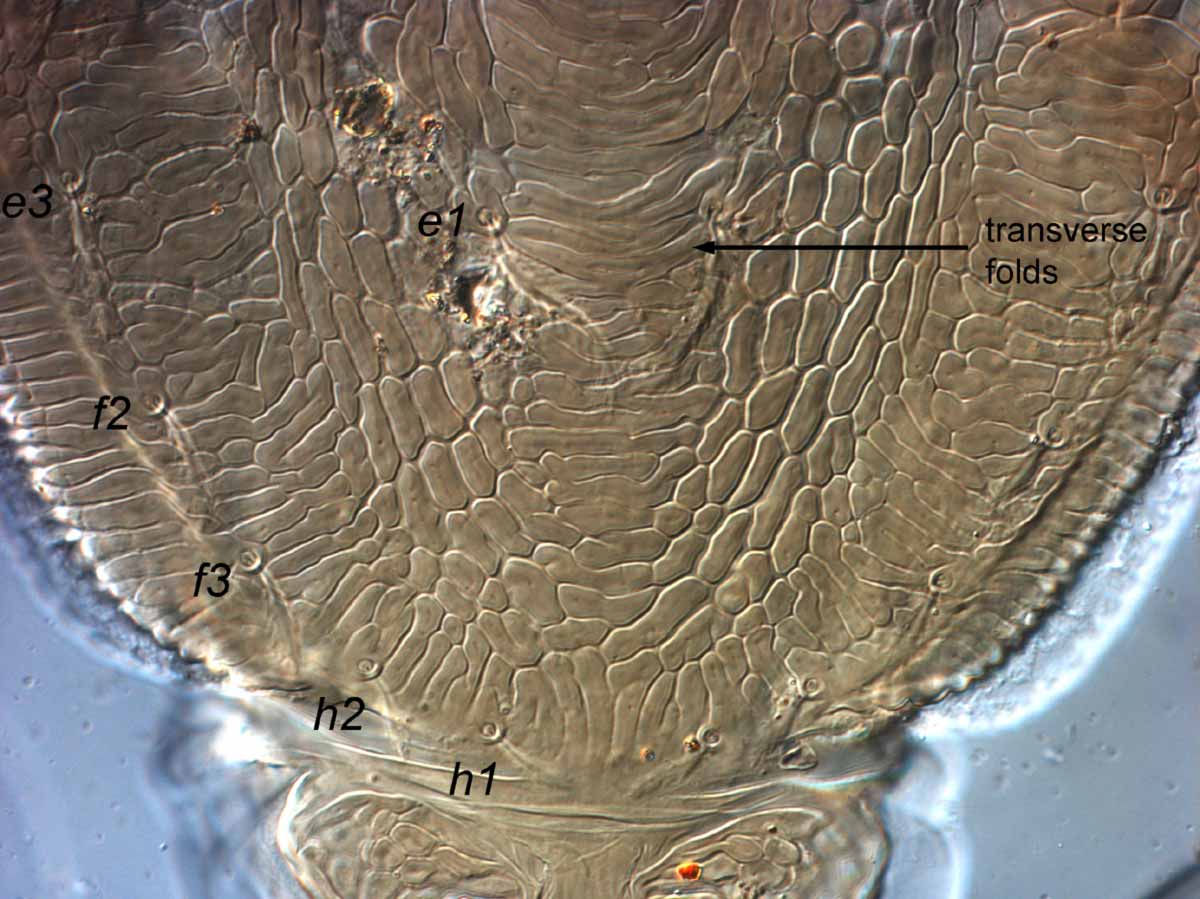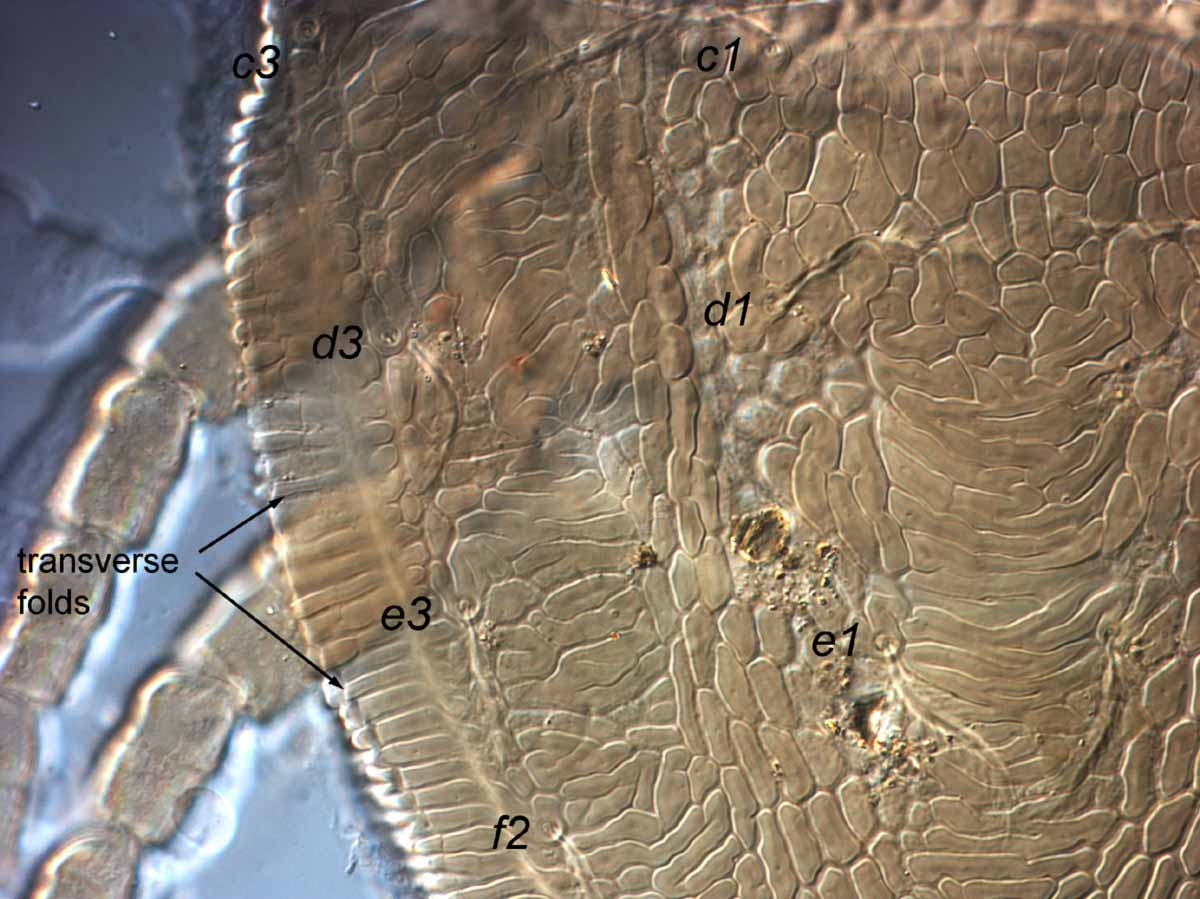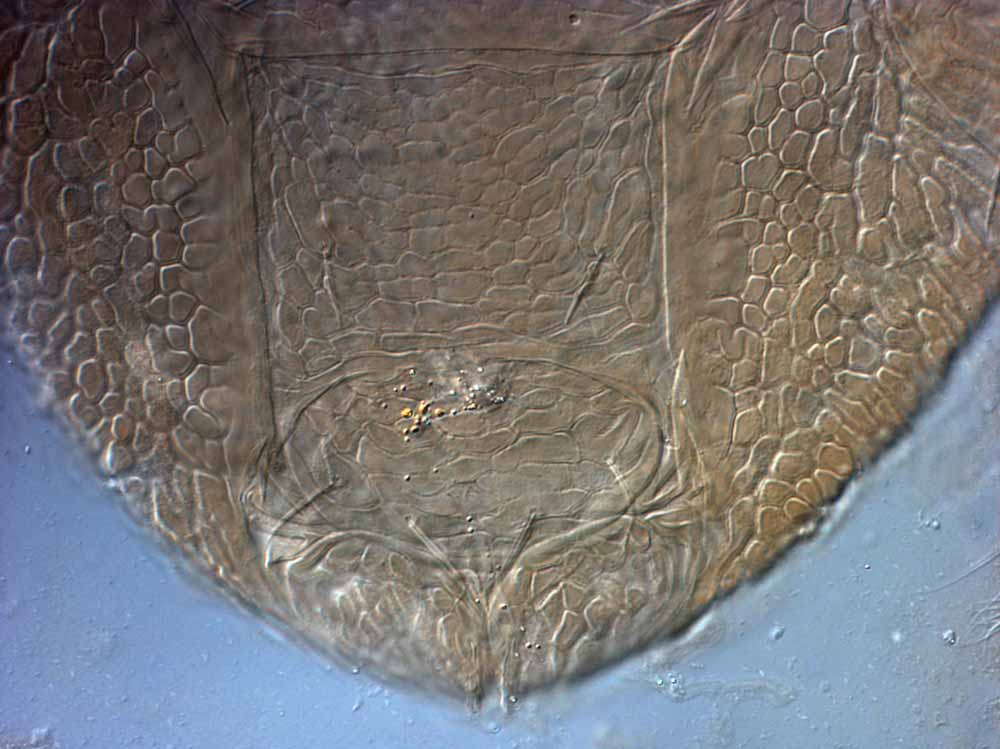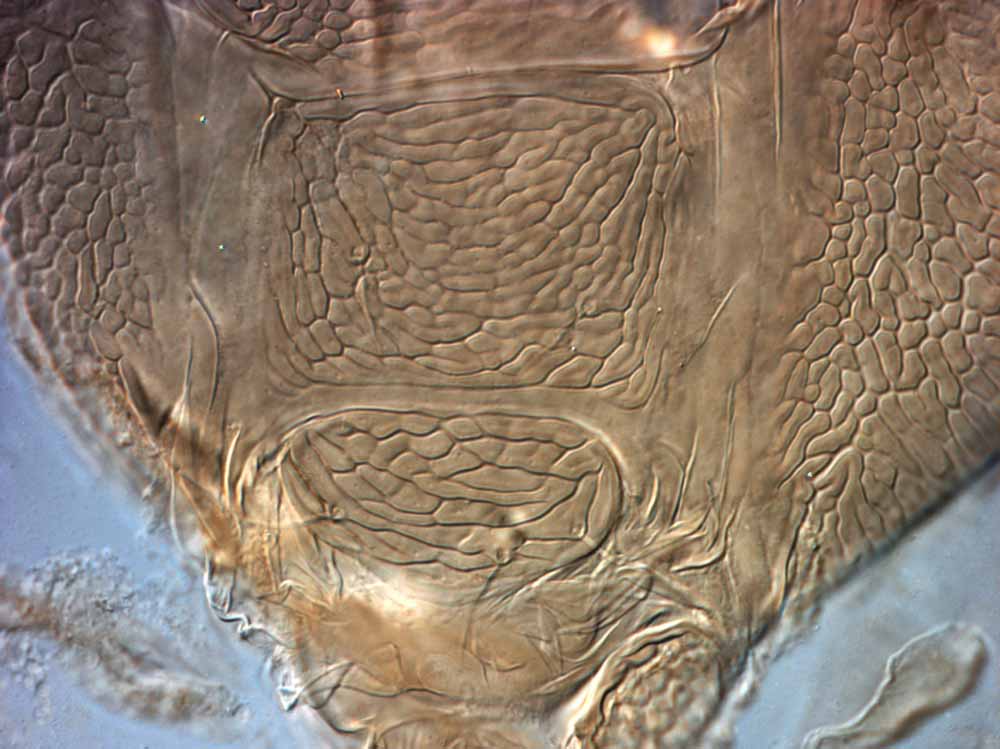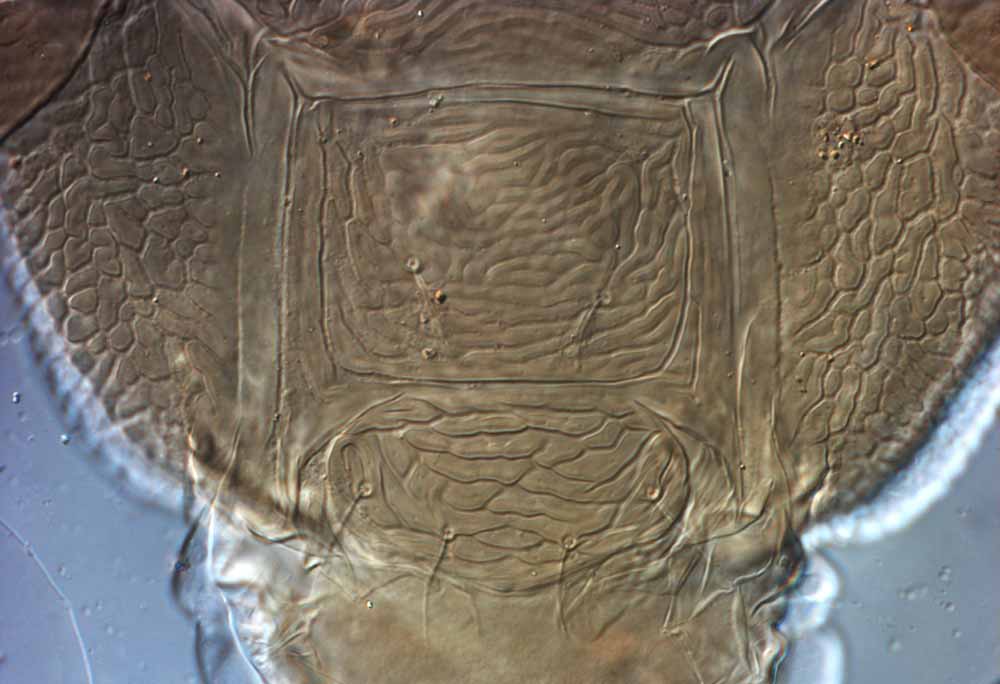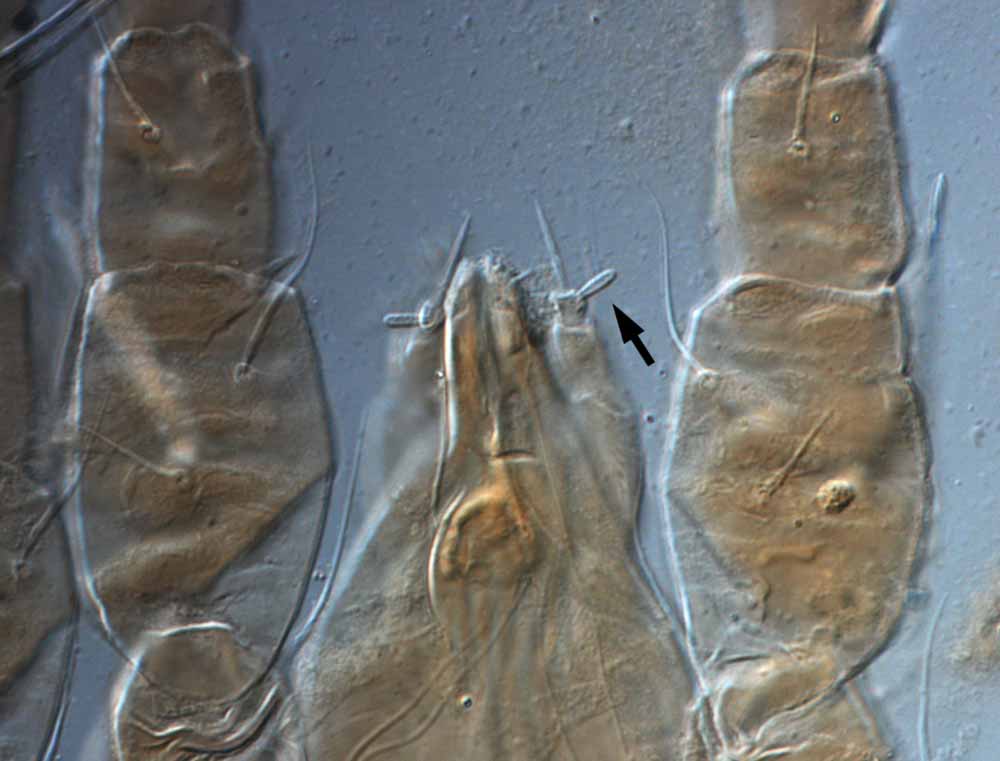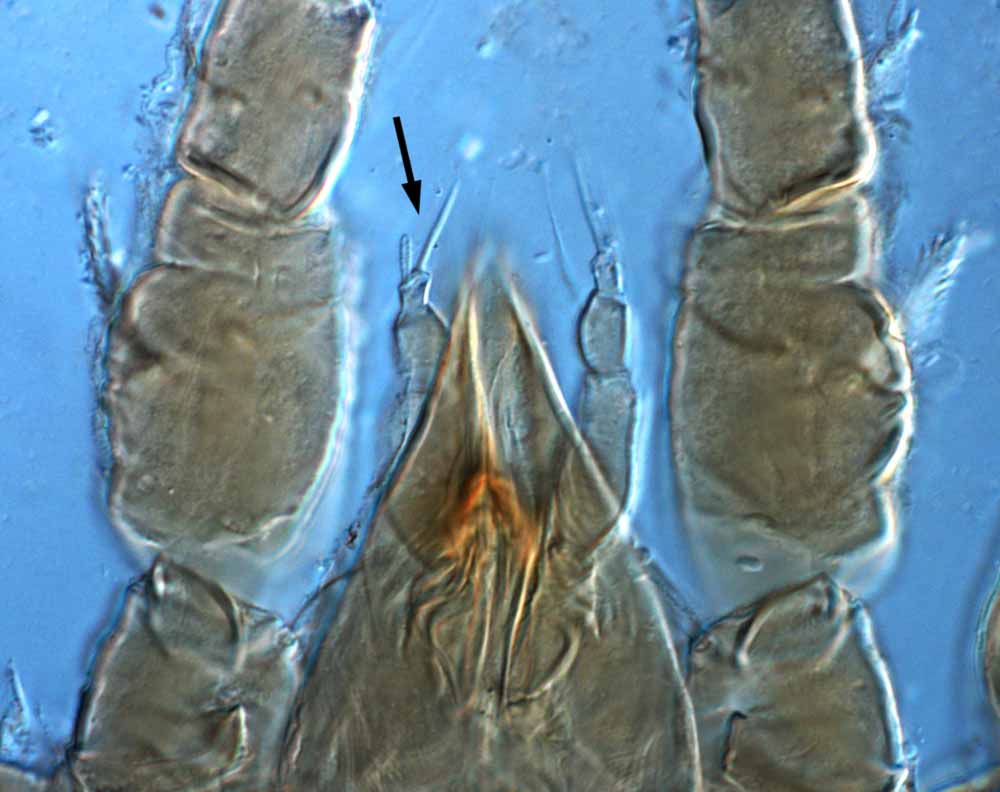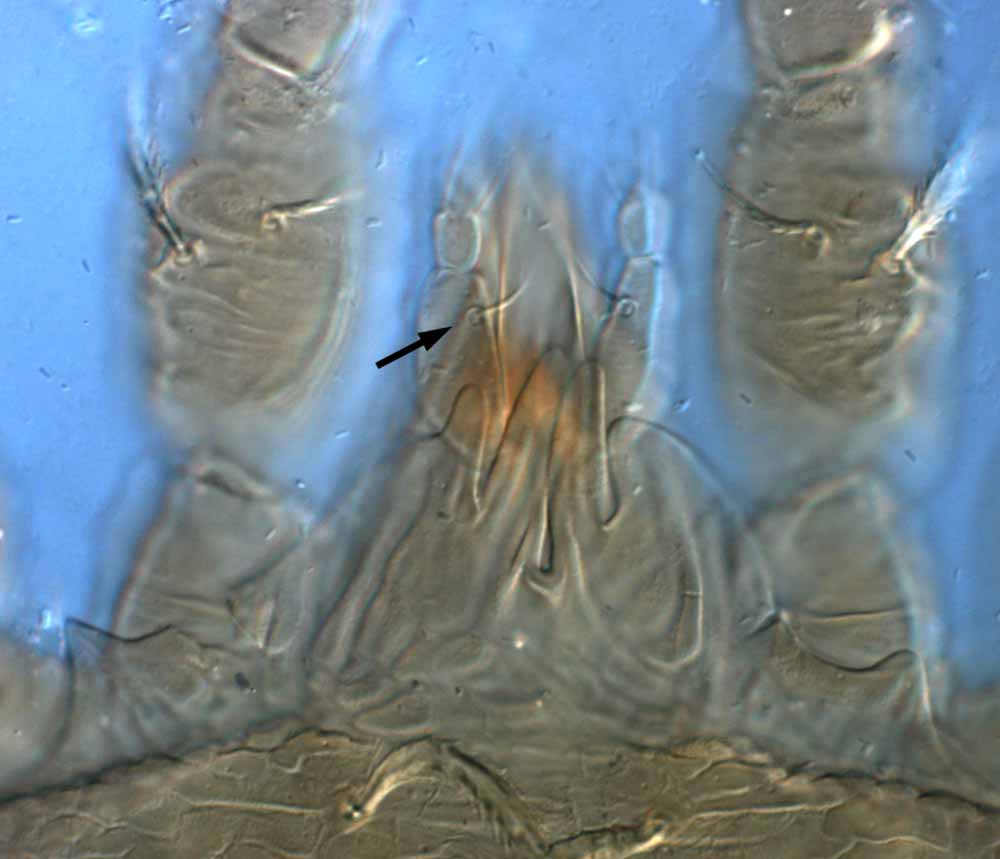Brevipalpus portalis
|
Fig. 1. Brevipalpus portalis female dorsum (paratype). |
|
Fig. 2. Brevipalpus portalis female dorsum. |
|
Fig. 3. Brevipalpus portalis female prodorsum. |
|
Fig. 4. Brevipalpus portalis female prodorsum. |
|
Fig. 5. Brevipalpus portalis female prodorsum (paratype). |
|
Fig. 6. Brevipalpus portalis female dorsal opisthsoma. |
|
Fig. 7. Brevipalpus portalis female posterior dorsum. |
|
Fig. 8. Brevipalpus portalis female lateral dorsal opisthsoma |
|
Fig. 9. Brevipalpus portalis female posterior venter (paratype). |
|
Fig. 10. Brevipalpus portalis female posterior venter. |
|
Fig. 11. Brevipalpus portalis female posterior venter. |
|
Fig. 12. Brevipalpus portalis female palp tarsus - arrow indicates short solenidion (paratype). |
|
Fig. 13. Brevipalpus portalis female palp tarsus - arrow indicates 2 distal setae. |
|
Fig. 14. Brevipalpus portalis female gnathosoma - arrow indicates seta on palp femur. |
Authority
Baker & Tuttle
Taxonomic history
Hystripalpus portalis - Mitrofanov & Strunkova (1979)
Synonyms
Brevipalpus incanum Baker, Tuttle & Abbatiello 1975:19 (Mexico)
Species group characters
B. portalis species group (sensu Baker & Tuttle 1987) = f2 present; tarsus II with 1 solenidion; dorsal central setae (c1, d1, e1) similar in shape to dorsal lateral setae (c3, d3, e3); palp 4-segmented with 2 distal setae
Characters
- opisthosomal setae f2 present (= 7 setae around opisthosomal margin) (Figs. 1, 2, 7, 8)
- tarsus II with 1 solenidion distally (antiaxial)
- long dorsal setae; dorsal cuticle with distinct reticulation (Figs. 1, 2)
- prodorsum with strong pebble-like reticulation over most of cuticle, most cells closed, with a few fused cells centrally (Figs. 3, 4, 5); lateral margin with cells fused to form a distinct series of transverse/oblique bands (Fig. 3)
- dorsal opisthosoma cuticle between c1-c1 and d1-d1 reticulate with large closed cells; cuticle between d1-d1 to posterior of e1-e1 with series of transverse folds (Figs. 6, 7); cuticle around lateral margin with distinct series of transverse folds (Fig. 8)
- ventral plate with small to medium rounded cells (Figs. 9, 10), often fused to form weak bands (Fig. 11)
- genital plate with large cells, somewhat transversely elongate (Figs. 9, 10, 11)
- spermatheca not visible
- palp tarsus with 2 setae distally = short solenidion and long eupathidion (Figs. 12, 13)
- palp femur seta thin, tapered, finely barbed (Fig. 14)
- trochanter III with 2 setae
Distribution based on confirmed specimens
Mexico, *USA (AZ)
* - holotype
Hosts based on confirmed specimens
Parthenium incanum H.B. & K. (Asteraceae)
References
*Baker & Tuttle (1972); Baker & Tuttle (1987); Baker, Tuttle & Abbatiello (1975); Meyer (1979); Mitrofanov & Strunkova (1979)
* - original description

